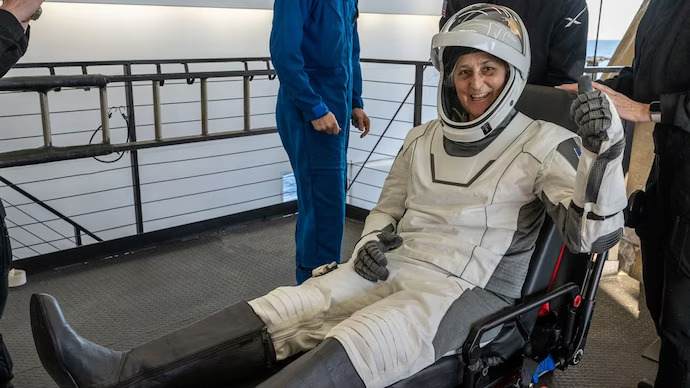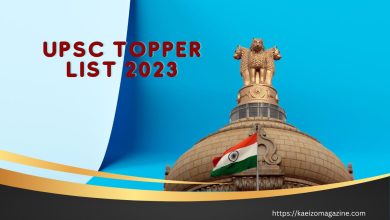Sunita Williams Return: From the Stars to Home – An Unforgettable Space Adventure

Imagine the excitement and challenges of a Sunita Williams return from space after spending almost a year orbiting the Earth. After 286 days in space and completing 4,577 orbits, this remarkable return story captures not only the spirit of adventure but also the dedication required to overcome unforeseen obstacles. From facing technical faults in her spacecraft to safely splashing down in the Atlantic Ocean, the Sunita Williams return is an inspiring example of perseverance and achievement in modern space exploration.
The Long Journey in Space: A Sunita Williams Return Adventure
Sunita Williams was part of the Crew-9 mission, a group of experienced astronauts who traveled on an exciting space expedition. During her time in space, Sunita traveled a distance of about 195.2 million kilometres. Originally, her mission was expected to be short—a quick test flight where her skills as a former test pilot in the US Navy would shine. However, things did not go exactly as planned.
Shortly after launch, the Starliner spacecraft, which was meant to carry her into space, started having technical problems. These problems meant that instead of returning after a brief period, Sunita and her team had to stay in zero gravity for many extra months. This twist turned what was supposed to be a short trip into an adventure lasting over nine months. During this time, she faced challenges and even had to perform spacewalks that broke records.
The Thrilling Return Home: Steps in the Sunita Williams Return
After spending almost 10 months in space, it was finally time for the Crew-9 astronauts to come back to Earth. Their return journey was just as exciting as their time in space. The crew boarded the SpaceX Dragon spacecraft—a very reliable vehicle known for its safety and efficiency. They undocked from the International Space Station and began a carefully planned 17-hour flight back home.
During this return, the Dragon spacecraft had to perform several important steps to ensure a safe landing. First, it fired its engines to start a controlled descent back into Earth’s thick atmosphere. As the spacecraft re-entered the atmosphere, the friction created an extremely hot “wall” of plasma around the capsule. For a few minutes, communication with Mission Control was lost due to this intense heat, leaving the astronauts holding their breath until contact was re-established.
After emerging from the intense heat, the spacecraft slowed down thanks to the drogue parachutes, which worked like giant brakes. These parachutes reduced the speed of the capsule so that when it finally splashed down in the Atlantic Ocean off the coast of Florida, the landing was very gentle. A recovery ship was already waiting at the landing site to help the crew and bring them safely aboard.
Adjusting to Life on Earth After a Sunita Williams Return
Returning to Earth is not as simple as just landing safely in the ocean. After spending many months in the zero-gravity environment of space, the human body needs time to readjust to Earth’s gravity. In space, fluids in the body tend to move upward, making astronauts’ faces puffy and their legs appear thinner. Once back on Earth, gravity pulls these fluids back down, which can sometimes cause discomfort and even make it hard for the muscles to work properly.
For Sunita Williams, this means that her recovery process is just beginning. The re-adaptation to gravity can result in muscle weakness, difficulty walking, and even a temporary loss in bone density. Astronauts can lose 1-2% of their bone mass for every month spent in space. Over time, exercise routines on the space station help to keep muscles strong, but the transition back to Earth may still be challenging. This period of adjustment is normal, and with time and proper rehabilitation, astronauts can regain their full strength.
A Special Message from PM Modi: Celebrating the Sunita Williams Return
Before her return, a heartfelt message from Prime Minister Narendra Modi made headlines across the world. Delivered in a personal letter by astronaut Mike Massimino, PM Modi’s words touched the hearts of millions, especially in India. He wrote, “Even though you are thousands of miles away, you remain close to our hearts.” This message was not only a warm greeting but also a sign of deep pride in Sunita Williams’ accomplishments.

PM Modi’s letter went on to celebrate her contributions to space exploration, emphasizing that her achievements are a source of inspiration for all Indians. The Prime Minister also invited her to visit India, reinforcing the strong bond between her and the 1.4 billion people of the nation. This personal touch from one of the world’s most influential leaders highlighted how space exploration is not just a scientific achievement but also a matter of national pride and unity.
Political and Commercial Impact in Space Travel
Sunita Williams’ journey has also sparked conversations beyond science and exploration. Her return became a part of a broader political discussion. After her mission ended, some political leaders used her return to critique various space programs and administrations. The fact that Sunita launched on Boeing’s Starliner spacecraft, which had faced multiple technical challenges, came under close scrutiny.
In contrast, SpaceX’s Dragon spacecraft, which was used for her return journey, has shown an impressive record of success. SpaceX, founded by Elon Musk, has become one of the most trusted names in modern space travel, consistently delivering safe missions. Their work has not only advanced space technology but also set new standards for re-entry and landing procedures.
This comparison between the two spacecraft—Boeing’s Starliner and SpaceX’s Dragon—has fueled debates about the future of space travel. With SpaceX’s record standing strong, many experts believe that the company will continue to lead the way in commercial space missions. In fact, SpaceX is already planning its next mission, the Axiom-4 mission, which is set to launch in the coming months.
For more insights into how politics and commerce are shaping space travel, read more here.
Looking Ahead: Future Missions Inspired by the Sunita Williams Return and India’s Role
The upcoming Axiom-4 mission is especially exciting because it includes a special role for India. India Air Force Group Captain Shubhanshu Shukla is set to pilot the Dragon spacecraft on this mission. This mission, lasting around 14 days, is a private venture that will once again put India in the spotlight of space exploration—nearly fifty years after Rakesh Sharma’s famous flight.
This renewed interest in space travel is not only about advancing technology; it is also about inspiring future generations. As more countries and private companies join the race to explore beyond Earth, the story of Sunita Williams’ long journey home will continue to inspire young people around the world to dream big and explore the unknown.
The Human Spirit Behind the Sunita Williams Return
Sunita Williams’ adventure is a reminder of the incredible human spirit of exploration. Spending nearly a year in space and facing the physical and mental challenges that come with it is not an easy feat. Yet, through perseverance and dedication, she has not only returned safely but has also opened up a window into what it means to push the boundaries of human possibility.
Her journey reminds us that exploration is about overcoming obstacles and embracing the unknown. Whether it is dealing with technical problems, readjusting to gravity, or even handling political debates, every step of her adventure has shown the resilience and determination required to explore space.
Celebrating the Legacy of the Sunita Williams Return
Sunita Williams’ return from space is a story of courage, adventure, and the triumph of the human spirit. After 286 days of orbiting the Earth and completing 4,577 laps, she has come home safely, inspiring millions along the way. The challenges she faced—from the extended stay in space due to technical issues to the rigorous re-entry and the physical readjustments required upon landing—are a testament to her strength and the dedication of everyone involved in space exploration.
Adding to this inspiring tale is the warm and personal message from PM Modi, which not only celebrated her achievements but also symbolized the connection between scientific progress and national pride. As the future of space travel looks brighter with the success of SpaceX and the promise of upcoming missions like Axiom-4, Sunita Williams’ journey serves as a beacon of hope and inspiration for generations to come.
Her adventure is a reminder that the quest for knowledge and exploration will always push us to achieve great things, no matter how daunting the challenge. With dreams as vast as space itself, there is no limit to what we can achieve when we dare to explore beyond our familiar horizons.




